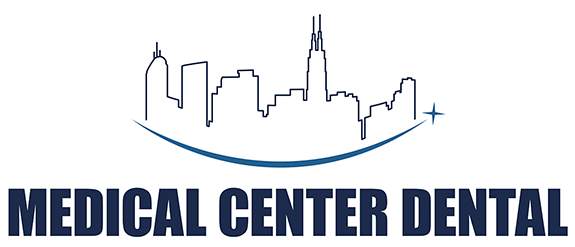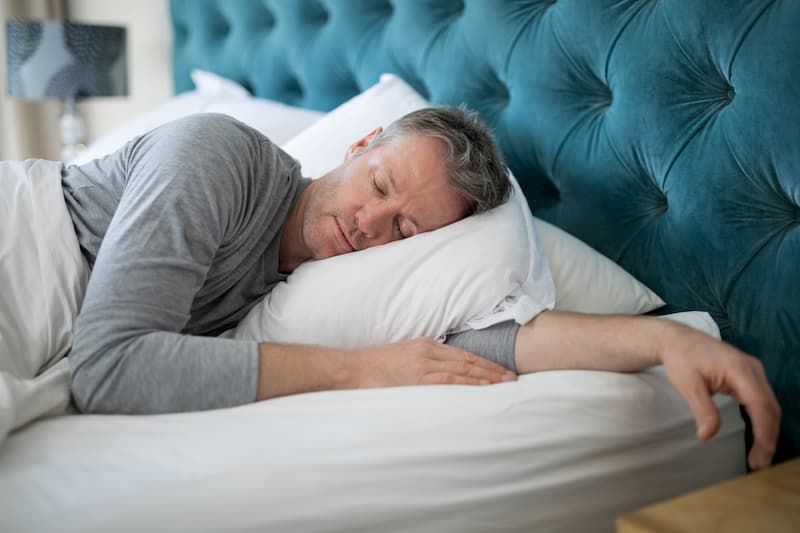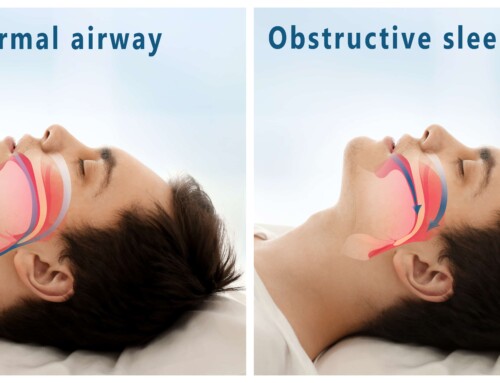Ingenious’ Sleep Apnea Procedure vs Others
Sleep apnea is a common condition that affects your quality of sleep. If you suffer from sleep apnea, you experience interruptions in breathing throughout the night, which can have severe consequences on your health both immediately and in the long term. Luckily, there are solutions available for the treatment of sleep apnea that can improve symptoms and prevent the complications that can arise. Some treatment options involve medical intervention, but there are several options available through your dentist that can relieve the symptoms of sleep apnea without surgical intervention.
What Is Sleep Apnea?
Sleep apnea is diagnosed as a condition that interrupts normal breathing patterns during sleep; there are multiple types of this condition. One type is central sleep apnea, which involves an airway that remains open but a signal that is confused and fails to properly raise the diaphragm and chest muscles when asleep. This type of apnea cannot be improved by treatment from your dentist.
The most common type, and one that can be treated by a dentist if certain criteria are met, is obstructive sleep apnea (OSA). During OSA, the muscles in the soft palate and tongue relax, blocking the airway during sleep. Some individuals are diagnosed with a mix of these two types. Symptoms of all types of sleep apnea are similar, with some key differences that used to make a diagnosis.
- Loud snoring with OSA
- Waking up gasping for breath during the night
- Lack of energy during the day in spite of a complete night of sleep
- Irritability and mood swing
- Headache, dry mouth or sore throat upon waking
- Partner notices snoring and gasping
How Is Sleep Apnea Diagnosed?
In many cases, patients have no idea, breathing interruptions are occurring at night while asleep, but may feel tired during the day no matter how early bedtime was the night before. Sometimes the patient’s partner complains of excessive snoring, while other times, the patient remembers waking up gasping. Any time sleep apnea is suspected, pursuing a diagnosis with a physician should be the next step.
During the diagnostic process, the physician asks a series of questions about sleep habits and observations. In most cases, a sleep study is ordered to confirm suspicions. A sleep study typically occurs in a specialty sleep clinic, but a modified version can be performed at home. During the study, measurements are taken to observe breathing patterns, heart rate, oxygen levels, blood pressure, and brain and lung activity.
Why Is It Important to Treat Sleep Apnea?
Some of the causes of sleep apnea can be improved with lifestyle changes. If you are overweight or a smoker, you can lose weight and stop smoking to see if OSA symptoms go away. In some cases, removal of the tonsils can help improve OSA issues. If lifestyle changes are not enough to treat your sleep apnea or you find it difficult to make the changes, speak with your dentist and doctor about your treatment options.
Treating sleep apnea is important because left untreated, it can lead to chronic and potentially dangerous issues. Some conditions that are attributed to other factors can be caused by untreated apnea, such as high blood pressure, low blood oxygen levels, type 2 diabetes, metabolic syndrome, chronic fatigue, and reduced liver functions. The risk of these complications increases with age and can worsen over time, so it is important to seek treatment if you suspect you have issues with apnea while you sleep.
What Are the Treatment Options?
After you are diagnosed with OSA or other types of apnea, your physician may suggest lifestyle changes, the use of a continuous positive airway pressure machine, or surgery to treat the condition. One surgical treatment option for individuals who suffer from sleep apnea, who do not want or cannot tolerate a CPAP machine is Inspire sleep apnea therapy, which involves the surgical implantation of a device that stimulates the tongue into a forward position to open the airway.
If you have a mild to moderate case, you may be eligible to receive treatment from your dentist using a dental device. Some dental devices must be used indefinitely and only help improve the symptoms without improving the source of the problem. Other devices, such as the Vivos system, treat the immediate symptoms while at the same time improving some of the underlying issues. For patients looking for the least invasive treatment option, working with the dentist can be the first logical step before surgical intervention is considered.
What Is Vivos Therapeutics?
The Vivos System is a non-invasive oral appliance used to treat both the symptoms and the underlying cause of OSA if the issue is determined to be related to the muscles and tissues of the mouth and throat. Most mild to moderate cases of OSA would benefit from this type of therapy. The Vivos system is considered safe for patients four years of age and above of all ages, virtually pain-free and completely non-surgical.
One of the major factors that make Vivos unique among OSA treatment options is the limited amount of time the system needs to be worn before the underlying cause improves and symptoms resolve. Typically, total treatment time with the appliance is between 9 and 18 months depending on patient compliance.
The process is highly technical but the symptom relief can be immediate. Using a treatment concept developed especially for this purpose, the system gradually expands the palate and opens up the structure of the airway. With high patient compliance, these changes become permanent and the use of the device can be discontinued. Additional benefits are seen with patients who have migraines or temporomandibular joint disorders.
Learn more about our treatment plan using the Vivos System here.
What Are the Advantages of the Vivos System Over Inspire Therapy?
Inspire therapy is often recommended when the use of a CPAP device is unsuccessful. Although patients usually experience success with Inspire, the treatment is more invasive than Vivos since surgery is required. During Inspire therapy, a device is implanted under general anesthesia. This device stimulates and regulates the nerves that keep your airway open while you sleep at night. Inspire is turned off during the day and switched on with a remote at night.
Although both treatment options typically improve sleep apnea symptoms significantly, patients who are eligible for the Vivos system experience symptom improvements without surgical intervention and are also able to resolve the root cause of the apnea. Inspire requires ongoing and indefinite treatment, while Vivos is time-limited. Vivos is pain-free and only worn at night and easy to use, while Inspire involves an implanted device that may prevent patients from receiving certain future medical diagnostic tools, such as an MRI. The Inspire implant will eventually need the batteries replaced, and this requires an additional surgery. Vivos is a comprehensive treatment to treat sleep apnea, while Inspire just treats the tongue position.
Schedule a Vivos Consultation with Ingenious Dentistry
If you suffer from sleep apnea and are looking for treatment options other than a CPAP machine, consider discussing the Vivos system with your dentist. Obstructive sleep apnea can lead to many different health problems if ignored, so seeking treatment is important to your long-term health. Vivos treats your immediate symptoms and over time expands the palate and permanently opens up the airway for a better night’s sleep. If you have any questions about the Vivos system or want to set up a consultation, contact Ingenious Dentistry or call (713) 795-5905 to schedule an appointment.
________
Photo credit: wavebreakmedia/www.shutterstock.com




